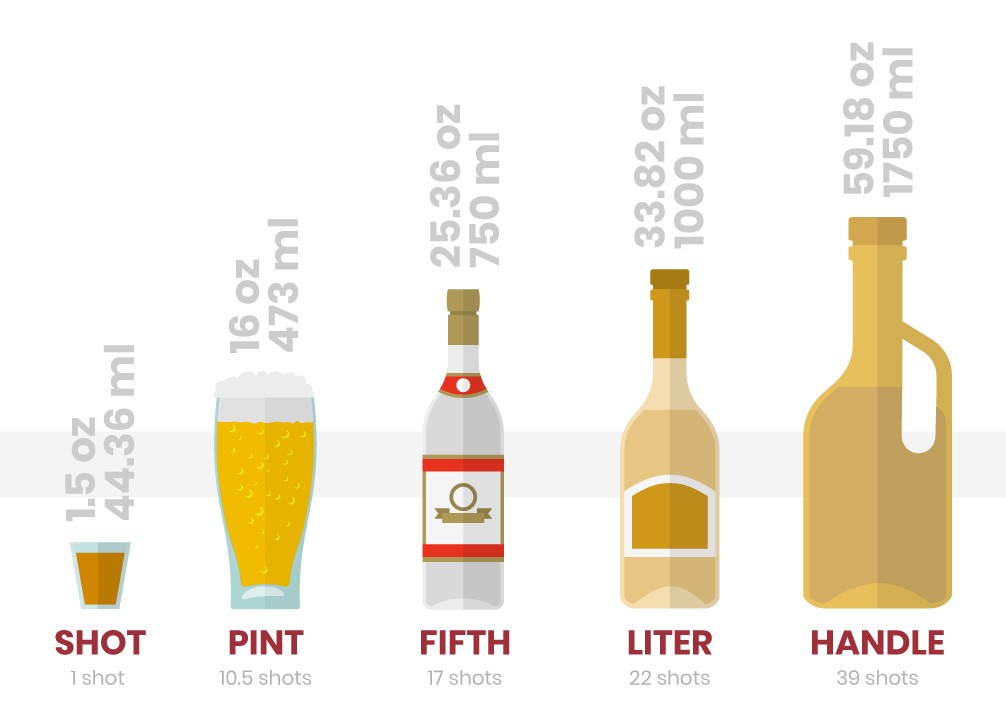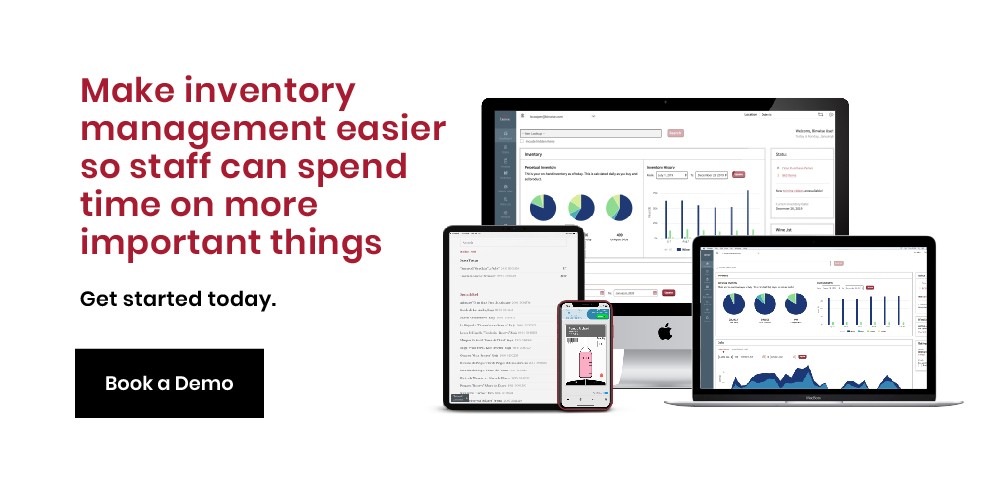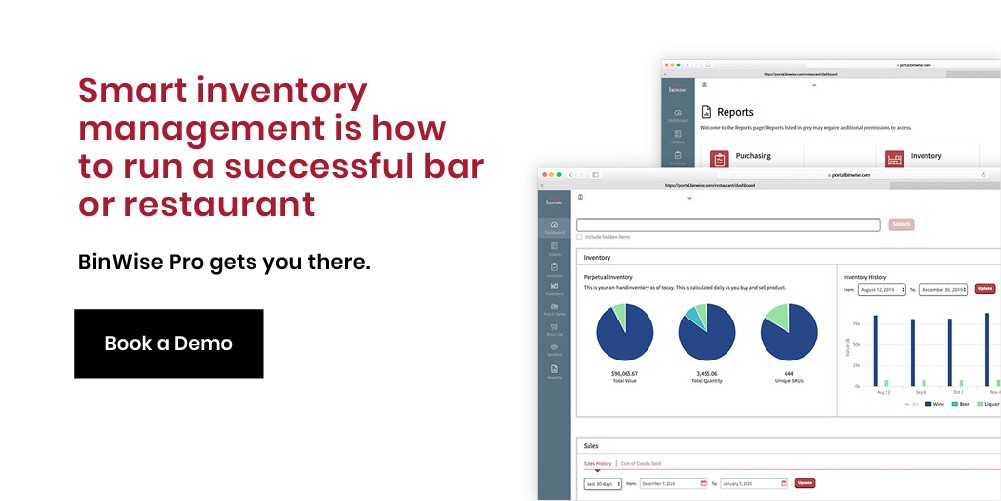How Much Is A 5th Of Liquor? Understanding liquor bottle sizes and their value is essential for consumers and bar owners alike. HOW.EDU.VN provides expert insights to navigate the world of liquor, helping you make informed decisions and optimize your spending. Explore the volume, shot count, and economic impact of a fifth of liquor, along with insights on bar inventory and cost management.
1. Understanding Liquor Bottle Sizes: A Comprehensive Guide
Liquor bottles come in various sizes, each offering a different quantity and value proposition. Knowing these sizes is crucial for managing inventory, pricing drinks, and understanding consumption habits. This section dives into the details of common liquor bottle sizes, their measurements, and their applications.
1.1. Common Liquor Bottle Sizes Chart
Here’s a chart detailing the most common liquor bottle sizes, along with the approximate number of shots, ounces, and milliliters they contain:
| Name | Shots (1.5 oz) | Ounces | Milliliters |
|---|---|---|---|
| Shot | 1 | 1.5 | 44.36 |
| Pint | 10.5 | 16 | 473 |
| Fifth | 17 | 25.36 | 750 |
| Liter | 22 | 33.82 | 1000 |
| Handle | 39 | 59.18 | 1750 |




This table provides a quick reference for understanding the volume of each bottle size, which is useful for bartenders, bar owners, and consumers looking to make informed purchasing decisions.
1.2. Less Common Alcohol Bottle Sizes
While the above chart covers the standard sizes, several less common options exist that are worth knowing about.
- Nip (Mini): Contains 50 ml (1.7 ounces), roughly one shot. Often sold individually in stores.
- Quarter Pint: Contains 100 ml (3.4 ounces), about two shots.
- Half-Pint: Contains 200 ml (6.8 ounces), approximately four shots.
- Magnum: Contains 1.5 L (50.7 ounces), around 34 shots. Popular for home bars and events.
- Double Magnum (Jeroboam): Contains 3 L (101.4 ounces), roughly 67 shots.
- Rehoboam: Contains 4.5 L (152.2 ounces), just over 101 shots. Used for special occasions.
Understanding these less common sizes can help with inventory planning and catering to specific customer needs.
1.3. Shots and Ounces: Understanding the Measurements
Navigating ounces and milliliters can be confusing. Here’s a breakdown:
- How Many Ounces in a Shot? A standard shot in the U.S. is 1.5 ounces. Some establishments use 1.25-ounce pours, while doubles are typically 3 ounces.
- How Many ML in a Shot? A 1.5-ounce shot equals approximately 44 milliliters.
- How Many Ounces in 750 ML? A 750 ml bottle contains 25.36 ounces.
- How Many Shots In a 750ML Bottle? A 750ml bottle yields about 17 1.5-ounce shots.
These measurements are vital for precise pouring and inventory management, ensuring consistent drink quality and cost control. Accurate measurements can significantly impact profitability and customer satisfaction, aligning with the expert guidance provided by HOW.EDU.VN.
2. The Fifth of Liquor: Exploring Its Significance
The “fifth” is a term commonly used to describe a 750 ml bottle of liquor. Its historical roots and practical applications make it an essential concept for anyone involved in the alcohol industry or interested in understanding liquor quantities.
2.1. What Is a Fifth of Liquor?
A fifth of liquor refers to a 750 ml alcohol bottle. The term originates from the late 19th century when one-fifth of a gallon was the legal limit for individual commercial alcohol sales. This made it a standard size for retail purchases.
2.2. How Many Drinks in a Fifth?
A fifth of liquor contains 25.36 ounces, which translates to approximately 17 standard 1.5-ounce drinks. This makes it a versatile size for home bars and small gatherings, offering a balance between quantity and manageability.
2.3. The 750 ML Bottle: A Standard in the Industry
The 750 ml bottle, or fifth, is the most common size for spirits. Whether it’s vodka, whiskey, gin, or rum, you’ll find most brands offering their products in this size. Its prevalence makes it easy to compare prices and manage inventory across different types of liquor.
3. Beyond the Fifth: Other Common Sizes Explained
While the fifth is a standard, understanding other bottle sizes is crucial for comprehensive inventory management and informed purchasing decisions. This section explores the liter and handle, providing insights into their measurements and applications.
3.1. The Liter Bottle: Metric System’s Contribution
A liter bottle contains 1,000 ml, making it 25% larger than a standard 750 ml fifth. Although not as common as the fifth in some regions, the liter bottle is a significant size for stocking a bar or larger events.
3.2. How Many Ounces in a Liter?
There are approximately 33.82 ounces in a liter. This larger volume provides more servings per bottle, making it a cost-effective option for high-volume establishments.
3.3. How Many Shots in a Liter?
A liter bottle yields 22 standard 1.5-ounce shots. This higher shot count can streamline service and reduce the frequency of bottle changes during busy periods, enhancing operational efficiency.
3.4. The Handle: The Party Size Bottle
A handle, or half-gallon, contains 1.75 liters (1750 ml). This is the largest common size available for most spirits, making it ideal for large gatherings and events where significant quantities of liquor are needed.
3.5. Ounces and Shots in a Handle
A handle contains approximately 59.18 ounces or 39 standard 1.5-ounce shots. Purchasing handles can reduce packaging waste and lower the cost per ounce, providing both economic and environmental benefits.
4. Global Comparisons and Economic Impacts
Liquor bottle sizes and their economic and environmental impacts vary globally, influenced by regional regulations, consumer preferences, and industry practices. Understanding these differences can inform more sustainable and cost-effective choices.
4.1. Global Variations in Liquor Bottle Sizes
Liquor bottle sizes differ across regions, with standard measures and popular formats varying by country. For example:
- United States: 750ml (fifth) is the standard for wine and spirits.
- Europe: 700ml is more common due to regional regulations, though 750ml sizes are still prevalent.
- Japan: Typically 720ml, especially for sake and local spirits.
- Australia: Often features 700ml for spirits.
4.2. Economic Impact of Liquor Bottle Sizes
The economic impact of liquor bottle sizes extends across production, consumer spending, and bar management.
- Larger Sizes (1.75L+): Allow producers to cut down on packaging and shipping costs per ounce, potentially lowering costs for consumers.
- Businesses: Larger bottles reduce waste, improve pour control, and maximize profit margins.
- Smaller Bottles: Cater to sampling and portion control but often at a higher cost per ounce.
4.3. Environmental Implications of Different Liquor Bottle Sizes
The environmental implications of different liquor bottle sizes are significant, especially regarding waste and resource usage.
- Larger Bottles: Typically mean less packaging per unit of alcohol, reducing overall environmental footprint.
- Smaller Bottles: Result in more packaging waste relative to the amount of liquid.
- Eco-Friendly Materials and Recycling: Mitigate environmental impact, making size a critical factor in sustainable production and consumption.
5. Mastering Liquor Inventory: Tips and Strategies
Effective inventory management is crucial for maintaining profitability and minimizing waste. This section provides practical tips and strategies for managing liquor inventory, from understanding pour counts to utilizing inventory management software.
5.1. Understanding Pour Counts
Knowing how many shots are in each bottle size helps in tracking consumption and managing costs. Consistent pour counts ensure that each drink is made according to standard recipes, maintaining quality and consistency.
- Fifth (750 ml): Approximately 17 shots.
- Liter (1000 ml): Approximately 22 shots.
- Handle (1.75 L): Approximately 39 shots.
5.2. Implementing Bar Inventory Software
Manual inventory counting can be time-consuming and prone to errors. Bar inventory software like BinWise Pro automates the process, turning manual counts into quick scans. It also helps discover the benefits of perpetual inventory, reducing overall inventory time.
5.3. Forecasting and Ordering
Accurate forecasting is essential for avoiding stockouts and overstocking. By analyzing sales data and trends, you can predict demand and order accordingly, minimizing waste and maximizing profitability.
5.4. Managing Waste and Spillage
Waste and spillage can significantly impact profitability. Implementing training programs and using the right tools can help minimize these losses. Accurate pour spouts and regular inventory checks can identify and address potential issues.
6. Frequently Asked Questions About Liquor Bottle Sizes
To further clarify any lingering questions, here are some frequently asked questions about liquor bottle sizes, measurements, and related topics.
6.1. What are the Different Sizes of Liquor Bottles?
Alcohol bottles come in a variety of sizes, including 50 ml, 100 ml, 200 ml, 375 ml, 750 ml, 1 L, and 1.75 L. The standard size is 750 ml, also known as a fifth.
6.2. What are the Sizes of Vodka Bottles?
Vodka and other spirits generally come in 50 ml (1.7 ounces), 200 ml (6.8 ounces), 375 ml (12.7 ounces), 750 ml (25.4 ounces), 1 L (33.8 ounces), and 1.75 L (59.2 ounces).
6.3. How Many Shots are In a Bottle of Liquor?
The number of shots varies depending on the bottle size:
- Nip/Miniature (50 ml): 1 shot
- Quarter Pint (100 ml): 2 shots
- Half-Pint (200 ml): 4 shots
- Pint (473 ml): 10.5 shots
- Standard Bottle/”Fifth” (750 ml): 17 shots
- Liter (1000 ml): 22 shots
- Half-Gallon/Handle (1.75 L): 39 shots
These measurements are helpful in keeping a pour count in mind while bartending.
6.4. What’s the Most Popular Type of Alcohol?
Beer is the most popular and most often consumed type of alcohol in the world, followed by spirits, wine, cider, and cocktail drinks.
6.5. What’s Considered a Moderate Amount of Alcohol?
12 fluid ounces of beer (355 milliliters) and 5 fluid ounces of wine (148 milliliters) are considered a moderate amount of alcohol for healthy adults. Exceeding this daily may lead to health issues.
6.6. Are Liquor Bottle Sizes Standardized Worldwide?
Liquor bottle sizes may vary by country and region. While some bottle sizes are widely recognized, there are regional differences in packaging regulations.
6.7. Do Liquor Bottle Sizes Affect the Aging Process of Spirits?
Bottle sizes can influence the aging process, as smaller bottles tend to age more quickly due to the higher ratio of spirit to air. Larger bottles may age more slowly.
6.8. Do All Spirits Come in the Same Bottle Sizes?
Liquor bottle sizes vary depending on the type of spirit and the brand. The 750 ml bottles are a standard for most, but some companies choose to use unique bottles and various sizes for marketing purposes.
6.9. Are There Specific Liquor Bottle Sizes for Specific Spirits?
While there are standard sizes, there is also flexibility. Companies can choose to use different liquor bottle sizes for different spirits. The most common types of spirits like whiskey and gin, for example, come in bottles of similar sizes.
6.10. Do Larger Bottle Sizes Offer Better Value?
Larger liquor bottle sizes often provide better value per ounce or milliliter compared to smaller bottles. Especially when running a bar or restaurant, choosing bottles that offer better value for your money is important.
7. Need Expert Advice? Consult with HOW.EDU.VN’s Specialists
Navigating the complexities of liquor bottle sizes, inventory management, and cost control can be challenging. At HOW.EDU.VN, we connect you with leading experts who can provide tailored advice to optimize your business or personal consumption habits.
7.1. Why Choose HOW.EDU.VN?
- Access to Top Experts: Connect with over 100 renowned professionals worldwide.
- Personalized Consultation: Receive customized advice tailored to your specific needs and challenges.
- Save Time and Money: Streamline your decision-making process and avoid costly mistakes.
- Confidential and Reliable: Ensure your information is protected and your questions are answered with integrity.
- Practical Solutions: Get actionable insights and strategies you can implement immediately.
7.2. How Our Experts Can Help
Our experts can assist with a wide range of topics, including:
- Inventory Management: Optimize your bar’s inventory to reduce waste and increase profitability.
- Cost Control: Develop strategies to lower costs and maximize margins.
- Menu Planning: Create drink menus that appeal to your customers and drive sales.
- Regulatory Compliance: Navigate local and international regulations related to liquor sales.
- Sustainable Practices: Implement eco-friendly practices to reduce your environmental impact.
7.3. Take the Next Step: Connect with Our Experts Today
Don’t let uncertainty hold you back. Contact HOW.EDU.VN today and let our experts guide you to success. Our team is ready to provide the support and advice you need to make informed decisions and achieve your goals.
Address: 456 Expertise Plaza, Consult City, CA 90210, United States
WhatsApp: +1 (310) 555-1212
Website: HOW.EDU.VN
8. Conclusion: Making Informed Decisions About Liquor Bottle Sizes
Understanding liquor bottle sizes is essential for both consumers and businesses. By knowing the volume, shot count, and value of different sizes, you can make informed purchasing decisions and manage inventory more effectively. Whether you’re stocking a home bar or running a busy restaurant, the knowledge shared in this guide will help you optimize your operations and enhance your overall experience. For personalized guidance and expert advice, reach out to how.edu.vn and connect with our team of experienced professionals.
